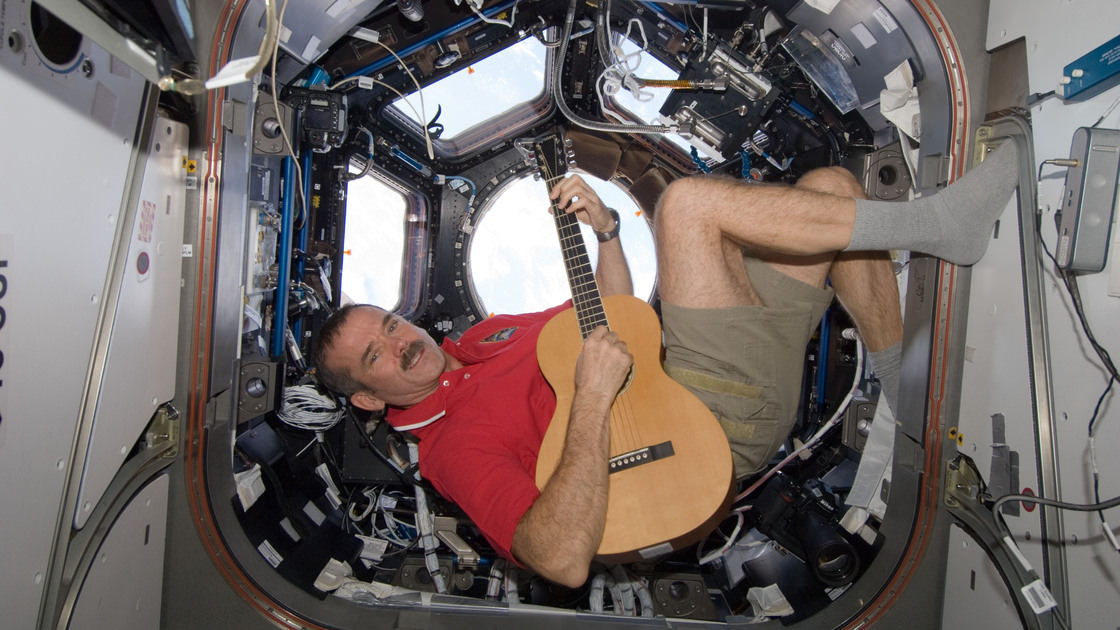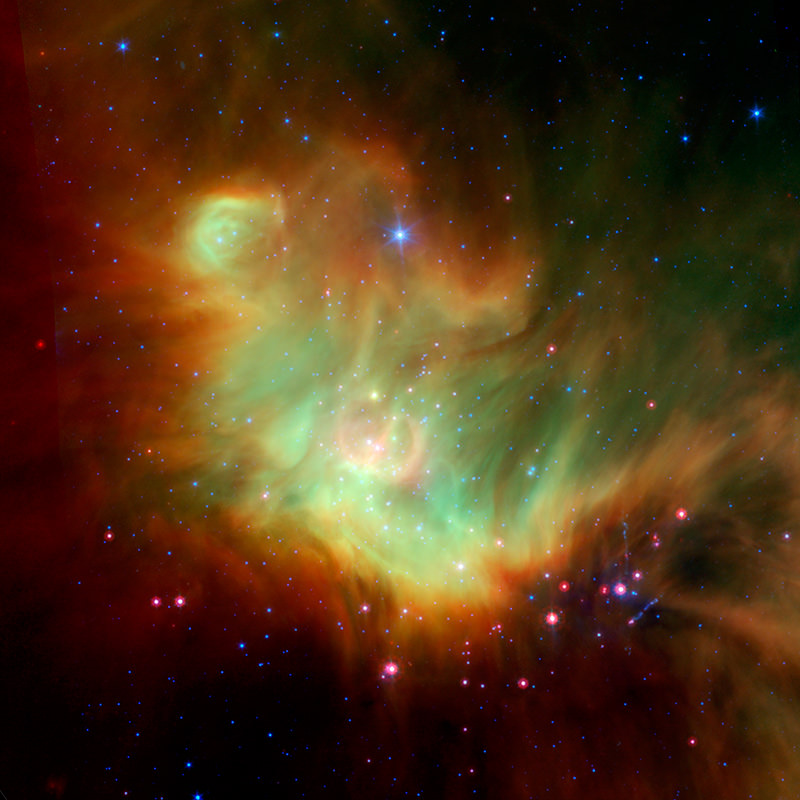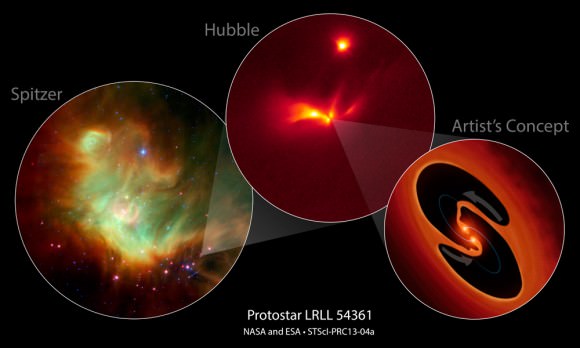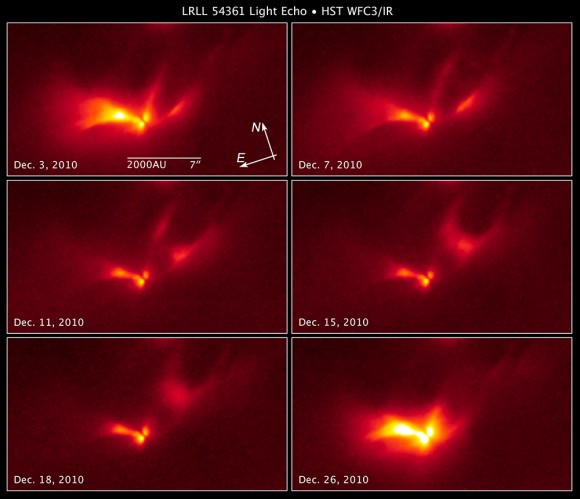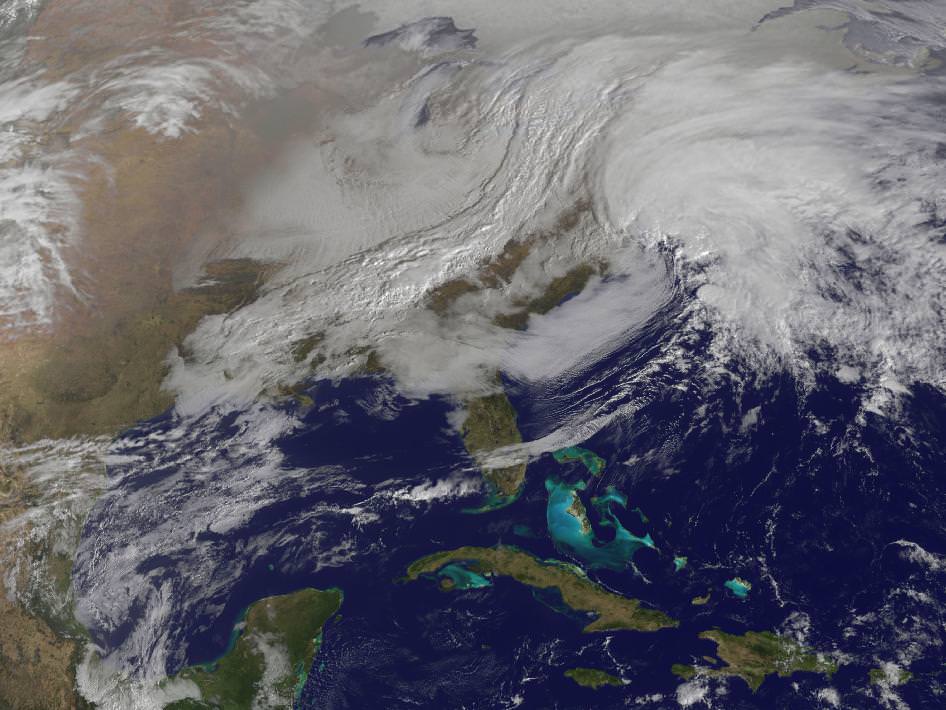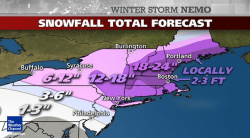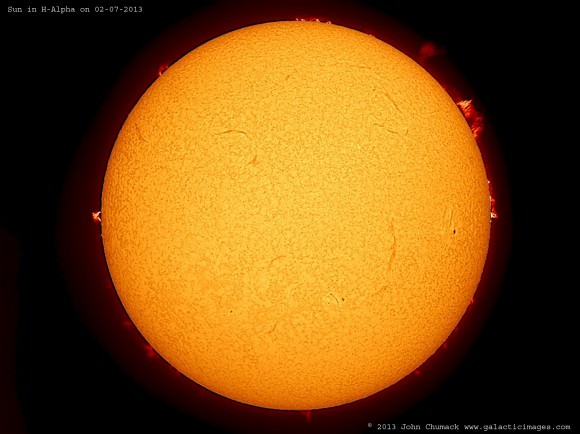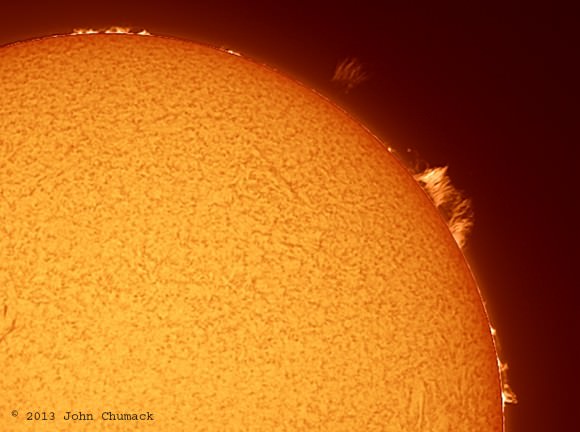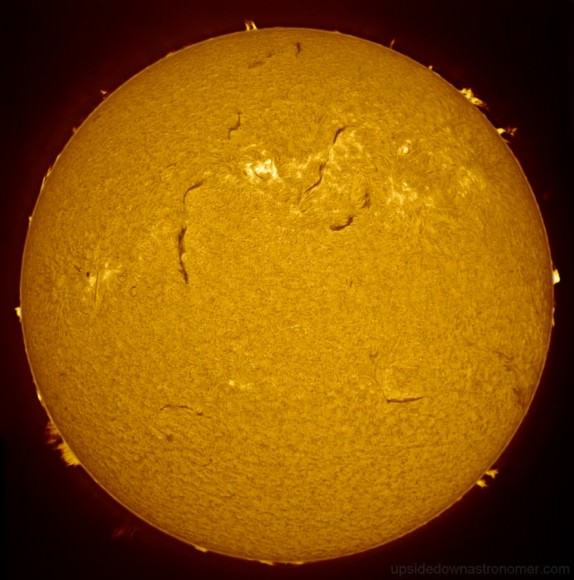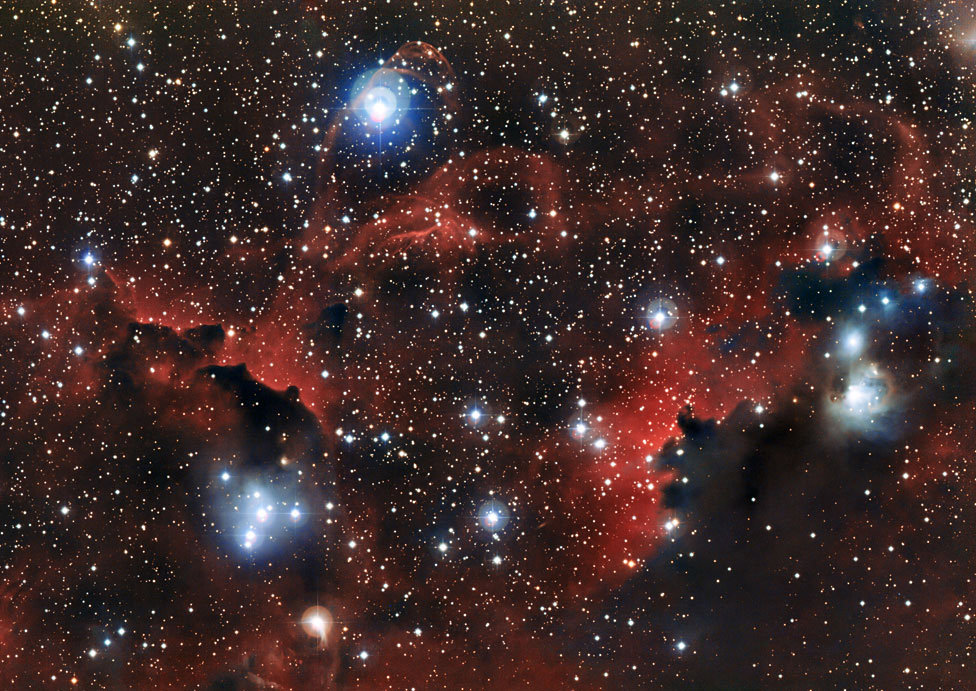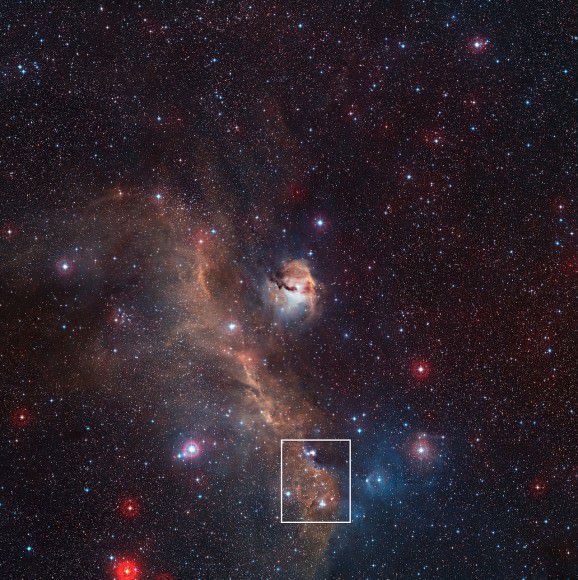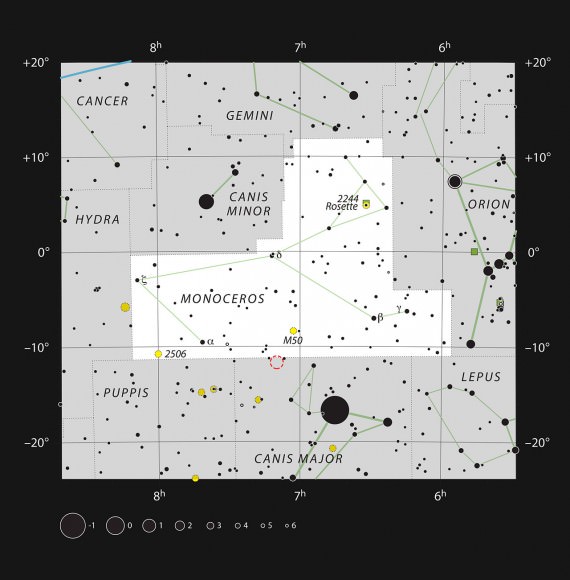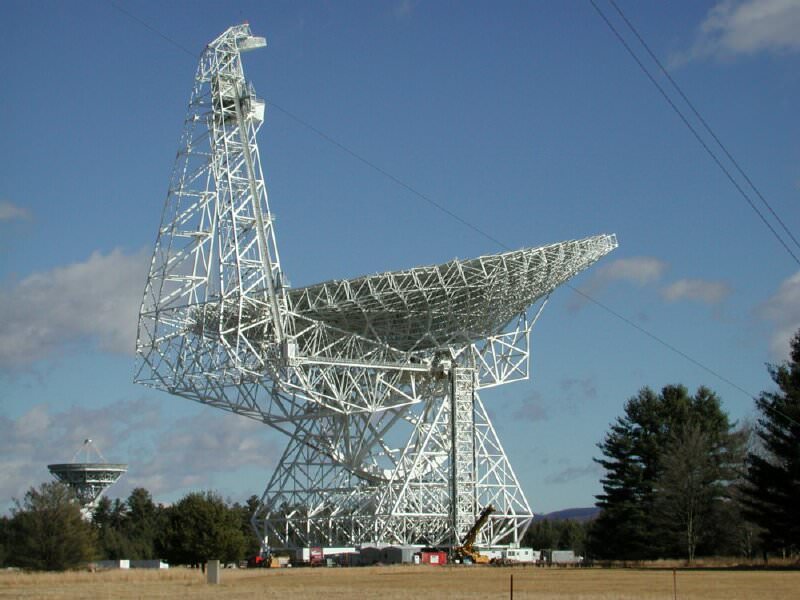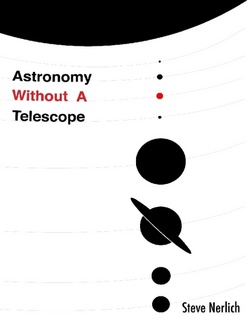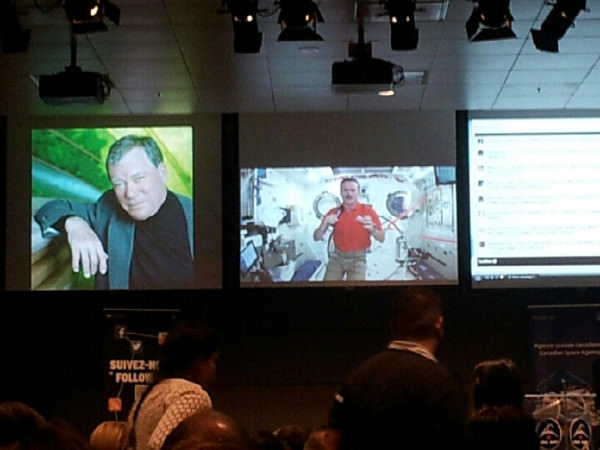Canadian astronaut Chris Hadfield participated in an annual event for Canadian music students from a unique location: a long-distance perch in the Cupola of the International Space Station. Before launching to the ISS in December, Hadfield wrote a song with Ed Robertson of the band Barenaked Ladies, and Friday morning the song premiered as Hadfield, Robertson and a school glee club sang together: Hadfield performed his part on the space station; Robertson did his in Toronto with the Wexford Gleeks. The song was part of Music Monday in Canada, and while today’s premiere was pre-recorded, in May, students across Canada will play the song live with Hadfield in space.
The song is called “I.S.S. (Is Somebody Singing),” it begins with the words:
Eighteen-thousand miles an hour
Fueled by science and solar power
The oceans racing past
At half a thousand tons
Ninety minutes moon to sun
A bullet can’t go half this fast.
Music aficionados can find the sheet music here and here.
Hadfield plays the guitar and sings with a couple of bands on Earth. Before he began his Expedition on the ISS, he told Universe Today he would be doing as much singing as he could in space.
“Music is really important to me, ever since I’ve been a kid. I’ve always played guitar and sang,” he said, “and I’m really hoping to have the chance to sit weightless with the guitar on board and play music, and also record some of the music I’ve written.”
He also is working to finish some songs he started writing on Earth while living on the ISS, which he called “a particularly inspirational environment” and maybe write some news ones.
“We have all the recording equipment we need on board,” he said. “It is basic but it is good enough to be able to record and I’m hoping to record at least one full CD’s worth of original music up there. It’s neat – I’m writing with my brother who is a musician, and he pointed out that a lot of the traditional folk songs came from people who were the first on the frontier — the early explorers, sailors, miners, and the fishermen — the people who are involved in the day-to-day of a specific human experience. To think I might be involved in helping to write some of the first space faring music, music that people might play and sing as they leave Earth for Mars, it is an interesting time in history.”
This isn’t the first Earth-Space musical collaboration: in 2011 astronaut Cady Coleman did a flute duet with Jethro Tull’s Ian Anderson.

